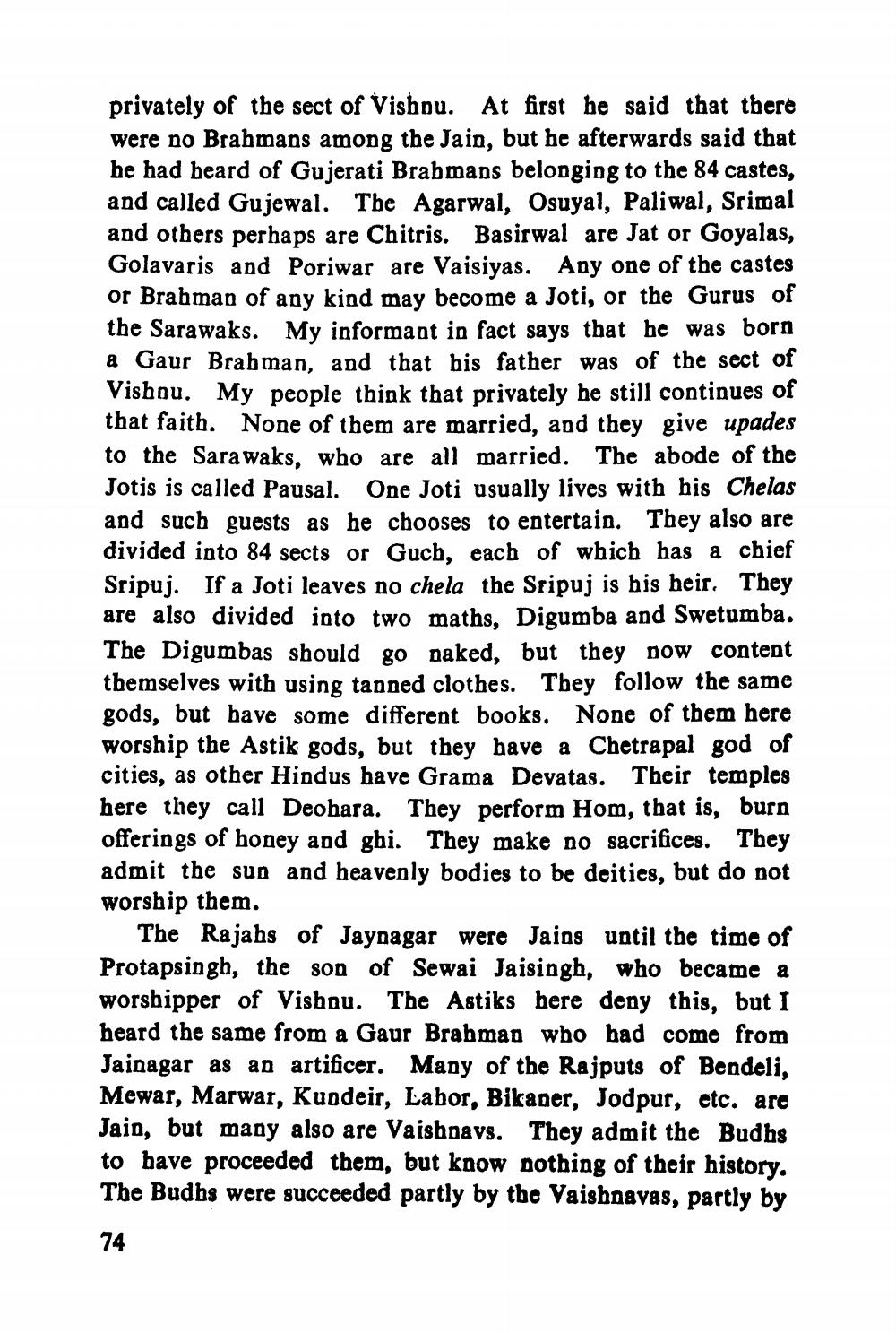________________
privately of the sect of Vishou. At first he said that there were no Brahmans among the Jain, but he afterwards said that he had heard of Gujerati Brabmaps belonging to the 84 castes, and called Gujewal. The Agarwal, Osuyal, Paliwal, Srimal and others perhaps are Chitris. Basirwal are Jat or Goyalas, Golavaris and Poriwar are Vaisiyas. Any one of the castes or Brahman of any kind may become a Joti, or the Gurus of the Sarawaks. My informant in fact says that he was born a Gaur Brabman, and that his father was of the sect of Vishou. My people think that privately he still continues of that faith. None of them are married, and they give upades to the Sarawaks, who are all married. The abode of the Jotis is called Pausal. One Joti usually lives with his Chelas and such guests as he chooses to entertain. They also are divided into 84 sects or Guch, each of which has a chief Sripuj. If a Joti leaves no chela the Sripuj is his heir, They are also divided into two maths, Digumba and Swetumba. The Digumbas should go naked, but they now content themselves with using tanned clothes. They follow the same gods, but have some different books. None of them here worship the Astik gods, but they have a Chetrapal god of cities, as other Hindus have Grama Devatas. Their temples here they call Deobara. They perform Hom, that is, burn offerings of honey and gbi. They make no sacrifices. They admit the sun and heavenly bodies to be deities, but do not worship them.
The Rajahs of Jaynagar were Jaias until the time of Protapsingh, the son of Sewai Jaisingh, who became a worshipper of Visbou. The Astiks here deny this, but I heard the same from a Gaur Brabman who had come from Jainagar as an artificer. Many of the Rajputs of Bendeli, Mewar, Marwar, Kuodeir, Labor, Bikaner, Jodpur, etc. are Jain, but many also are Vaishnavs. They admit the Budhs to have proceeded them, but know nothing of their history. The Budhs were succeeded partly by the Vaishnavas, partly by 74




